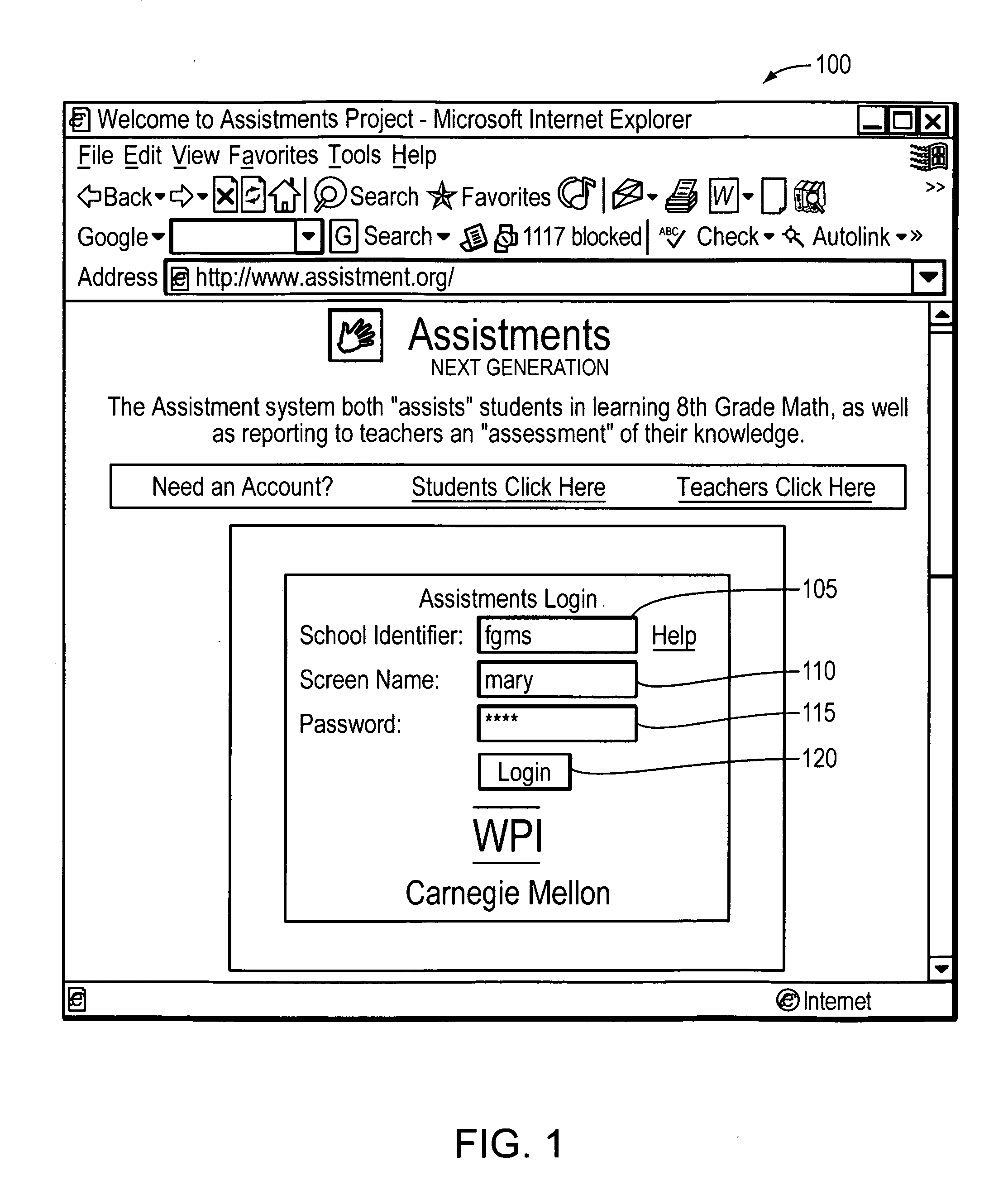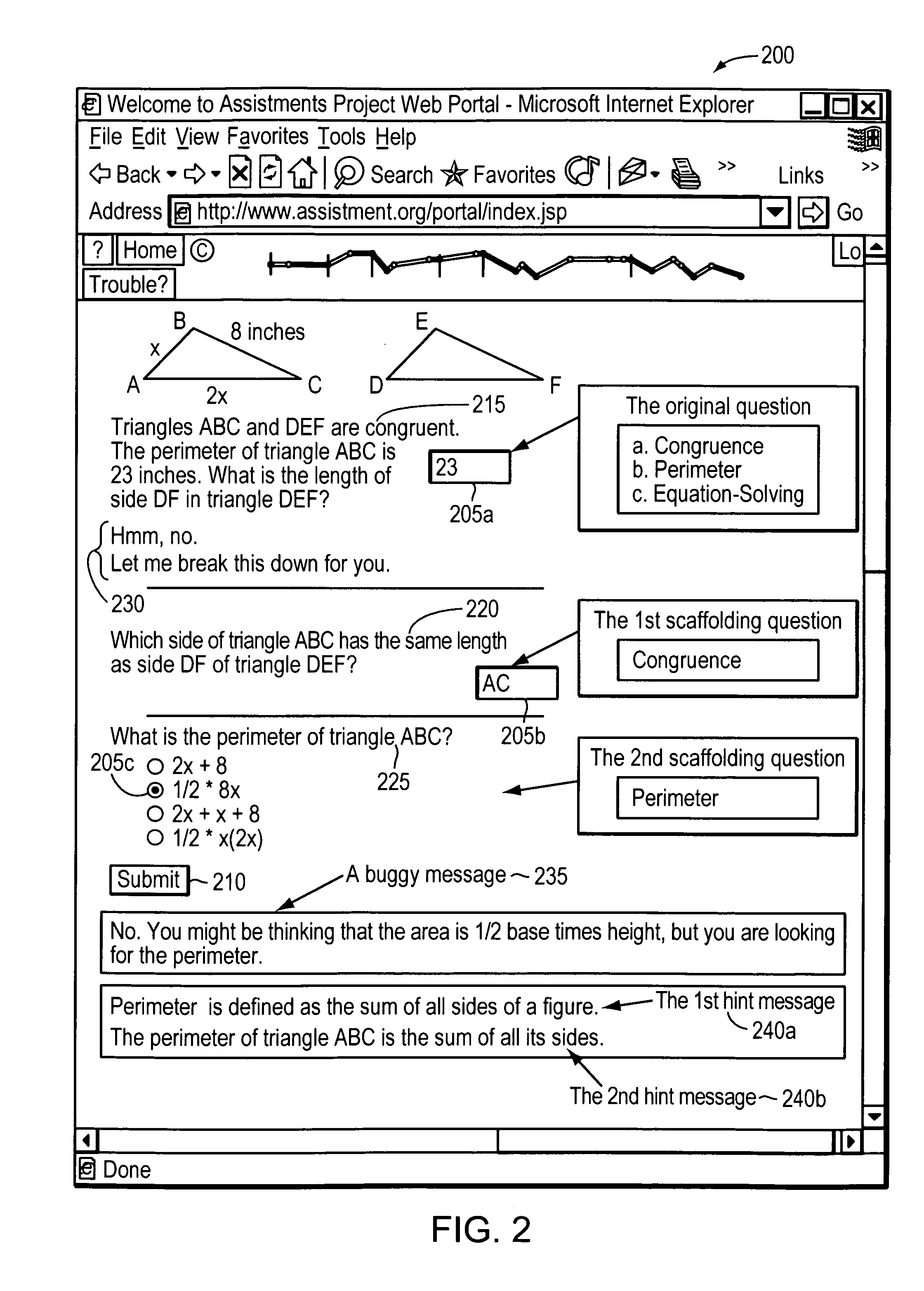Computer Method and System for Increasing the Quality of Student Learning
a computer and student learning technology, applied in the field of student learning improvement, can solve the problems of less useful diagnostically, even noticeable problems, and useful for teachers' students, and achieve the effect of increasing the quality of learning for students
- Summary
- Abstract
- Description
- Claims
- Application Information
AI Technical Summary
Benefits of technology
Problems solved by technology
Method used
Image
Examples
Embodiment Construction
[0023]A description of example embodiments of the invention follows. The teachings of all patents, published applications and references cited herein are incorporated by reference in their entirety.
[0024]Some systems provide a summative assessment for students. The summative assessments typically use a software program for testing students multiple times over a period of time (e.g., two years). In use, the software program samples a student's knowledge of a topic (e.g., mathematics, science, history, English, foreign languages, etc.) for each test. Each test, for example, samples randomly from a bank of thousands questions that are presented to the student. These questions are more summative in nature, and thus are useful for communicating growth over time. The summative assessments, however, sample a whole year's content and cannot track individual knowledge components (skills) effectively.
[0025]Both commercially available benchmark assessments and summative asses...
PUM
 Login to View More
Login to View More Abstract
Description
Claims
Application Information
 Login to View More
Login to View More - R&D
- Intellectual Property
- Life Sciences
- Materials
- Tech Scout
- Unparalleled Data Quality
- Higher Quality Content
- 60% Fewer Hallucinations
Browse by: Latest US Patents, China's latest patents, Technical Efficacy Thesaurus, Application Domain, Technology Topic, Popular Technical Reports.
© 2025 PatSnap. All rights reserved.Legal|Privacy policy|Modern Slavery Act Transparency Statement|Sitemap|About US| Contact US: help@patsnap.com



